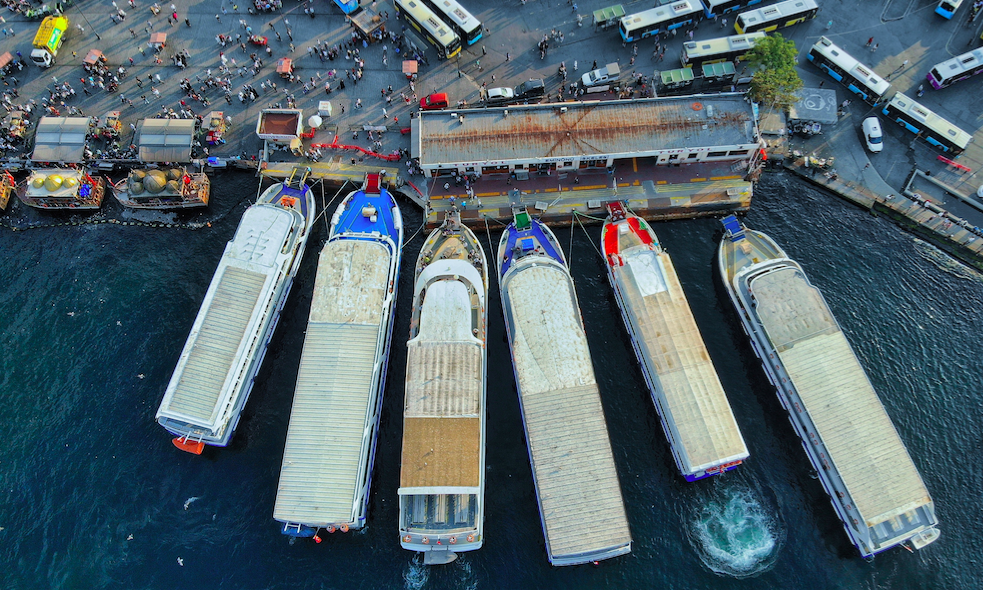The growth momentum in the cruise industry, which has been increasing for years, has stalled due to the COVID-19 outbreak. Can the industry recover this year and what expected in the long run?
One of the first alarms of Covid-19 came from the deck of the cruise ship Diamond Princess. More than 700 passengers aboard the ship, which quarantined for weeks in Yokohama, Japan, became infected in February 2020. Before everyone could land, 14 people died from a virus that very few people in the world knew about.
As estimated, 400 cruise ships are waiting in ports around the world due to COVID-19 restrictions. Luxury cruise ships became the first and most affected by the coronavirus. Because cruise ships were expensive to maintain. Investment companies’ revenues were near zero for months. Older models sold or scrapped to save costs. The cruise industry lost billions; travel group TUI spoke of a “disastrous year”. According to the Cruise Lines International Association; more than 200,000 jobs have been lost. Tens of thousands of employees work reduced hours in Europe since March.
Cruise companies are preparing to start working again. And waiting for the day they will anchor. To instill hopes at once.
Ready to sail with reworked hygiene concepts
In order for everything to run on board, companies have developed strict hygiene concepts. Everyone who wants to board the cruise ship must tested in advance. A possible COVID-19 outbreak on the ship can prevent by this way. Costs will be borne by the majority of cruise providers. There will also be strict hygiene protocols on board. Masks will be mandatory for both passengers and staff.
Since cruise ships are a closed system, they are much more sheltered than the holiday conditions in hotels. There is a digital tracking system on board that ensures constant monitoring. This can help contact tracing in the event of an outbreak.
In times of pandemic, all hygiene measures, trips took place with 60% of the normal number of passengers. Passengers were not allowed to disembark on initial voyages to Northern Europe. Also, Mediterranean and Singapore. Those who left the ship without permission were not allowed to return to the ship.
They convinced that these organizations are working. TUI Cruises said: “We have had over 50,000 passengers on 50+ ships since July and have shown that cruises are possible even in times of COVID-19.” With a few exceptions, the experiment was successful as most trips were uneventful.
But, the concept will not hold in the long run. Because for cruise operators, such a low number of passengers means losing money.
“The World’s Most Luxury Cruise Line,” Regent Seven Seas offers smaller, more intimate cruises to more than 300 ports around the world.
“In early 2021, we launched our Unrivaled Space at Sea campaign. “It focuses on the key benefits provided by lots of personal space and space-to-guest ratios.” says Montague, President and CEO of Regent Seven Seas.
To reduce pandemic concerns, Regent Seven Seas established the SailSafe Health and Safety Program It designed by the cruise line’s Health Council, chaired by Scott Gottlieb, former Commissioner of the U.S. Food and Drug Administration. The program includes equipment and sanitary practices to offer many layers of protection against Covid-19.

There is no recovery without a vaccine
Whether the cruise industry can recover in 2021 will depend first on the effectiveness of vaccination. So far, the financial backers are still on board. Because they know how profitable the cruise business is under normal circumstances.
Without full approval by the health authorities, countries such as Greece, the USA and Spain have closed their ports to cruise ships. Currently only the Canary Islands are open to ships. But the number of infections is rising there too. For example, the German Foreign Ministry has now issued a travel warning for the Spanish archipelago. And German ports continue to be closed to cruise ships.
The most important issue to look at on cruise lines is to improve the ventilation systems on the ship. It is recommended that the air in the cabins changed completely every five minutes, and in large public spaces every four minutes.
Boutique small-ship cruise line Windstar Cruises has invested millions in equipping its six ships. HEPA filters and UV-C ultraviolet germicidal irradiation used to filter and sanitize the air.
As a result Cruise companies remain under pressure in 2021. The pressure to operate comes from all sides. Many critics say the billions in government aid that cruise providers profit must invested in a sustainable way.







